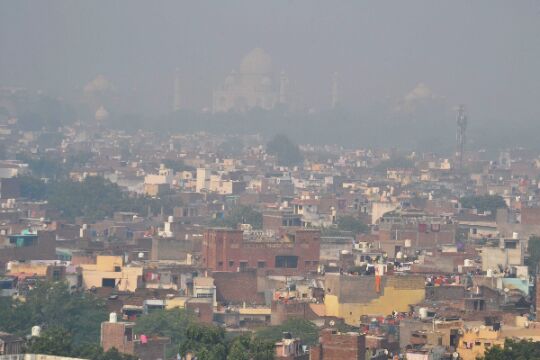Connecting the dots

Ultimately, the national capital of India has reached a point where its residents are struggling to breathe clean air. The entity at stake here is no less than livable condition across the city. The fact that the apex court had to intervene into the matter as a part of emergency response, sums up the gravity of the issue. The onus now completely lies on the executive wing of Central and concerned state governments. The Supreme Court's clear emphasis on 'immediate response' as against Delhi government's proposed 'long-term' plans indicates it is not at all a business-as-usual scenario. Bold measures are required to bring the situation back to normalcy. The apex court had initially hinted at 'two-day complete lockdown' as one of the possible measures. It then left it to Central and state governments to consider work from home policy on a temporary basis. These measures could help in two ways — first, it will directly prevent a significant portion of the population from being exposed to the toxic air, and second, it might reduce some form of vehicular emissions on account of reduced use of private vehicles. But clearly, such measures are far from enough. A large section of Delhi's population earn livelihood from activities that cannot be carried out from home. The auto-rickshaw drivers, local vendors and a whole lot of people one comes across the streets in Delhi will still be subject to all day long exposure to the toxic air. In fact, the Delhi government has already taken similar steps on a limited scale by closing schools and banning construction works. While these steps may, to a certain extent, improve the situation gradually, the Delhi government needs to take bolder steps for speedy recovery. The Centre, as directed by the Supreme Court, is expected to call a meeting with states on this matter today. At the same time, the Delhi government has shown willingness to resort to lockdown measures, but only if neighboring states are willing to do the same. This meeting called by the Centre can be utilised to get states on board for a complete lockdown measure. However, India has a harrowing memory of lockdowns. It is no mystery that past lockdowns have hit the unorganised sector the most. Any decision to impose lockdown in the NCR region must be duly deliberated, and be made only if it is unavoidable. Even if it has to come, the Central and state governments share the responsibility to prioritise and safeguard the interests of the unorganised sector. Apart from the lockdown, the Supreme Court also pointed towards curbing vehicular and industrial emissions. The court showed no ambiguity in its wordings as it asked the government which industries, plants and vehicles can be stopped temporarily. This observation appears to hit at the core of the air pollution crisis as transportation, followed by industry, remains the major polluter in the city. For the vehicles, the apex court was apparently pointing towards bigger commercial vehicles and old fleet vehicles that are known to contribute the major portion of transport air pollution share. While activities like fleet modernization are a long game, halting the running of ill-standard commercial vehicles for the time being may be a good idea. It must be noted though that implementation of such policies is a slightly complicated process. It would require broader collaboration among various governing bodies for successful execution. The Delhi traffic police can be roped in to prevent the running of unsafe vehicles on the roads. In fact, traffic police are already working in this direction by actively prosecuting the vehicles running without pollution under control certificates. For halting the operations of most polluting industries, the government would require quantitative data, and a set of criteria to single out industries. It won't be an easy task for the Delhi government, in immediate terms, to come out with a list if it lacks data. As the SC has adjourned the case for November 17, it will be interesting to see what the government comes up with for the next hearing. Meanwhile, different governing bodies are also up to the task of abating air pollution. South Delhi Municipal Corporation has stepped in with its routine winter pollution control actions, particularly to limit dust-caused air pollution. East Delhi Municipal Corporation has also banned firewood and coal eateries recently to curb air pollution and insisted on the use of CNG for such processes. So, in total, from the top-level judiciary to municipal bodies — all have suddenly sprung into action to curb air pollution. Efforts, as required by the time, are mostly focused on short-term immediate solutions. The Central and state governments are at the focal position and must coordinate and collaborate with all other stakeholders to ensure that Delhi's air quality is restored to safe levels as early as possible. The key would be to join the dots for a cumulative result.



